双队列实现栈
如下分析(例如出栈)
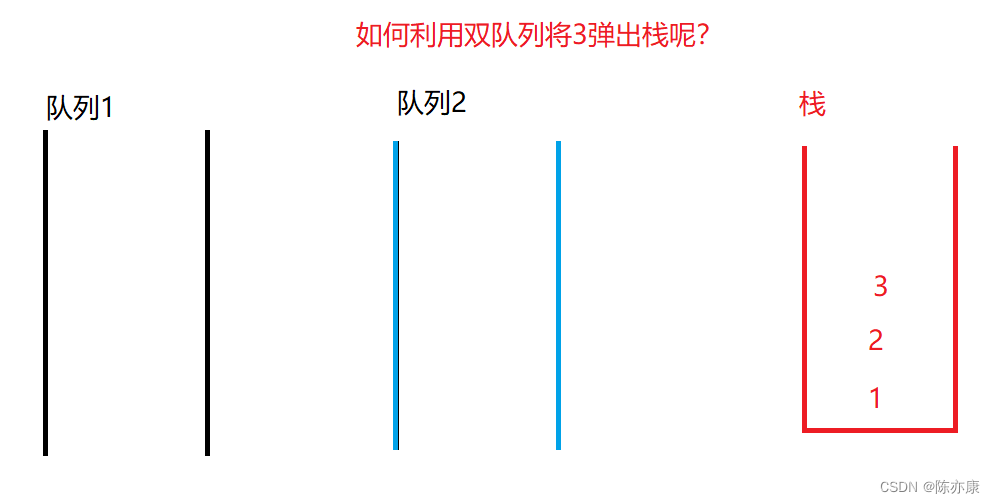
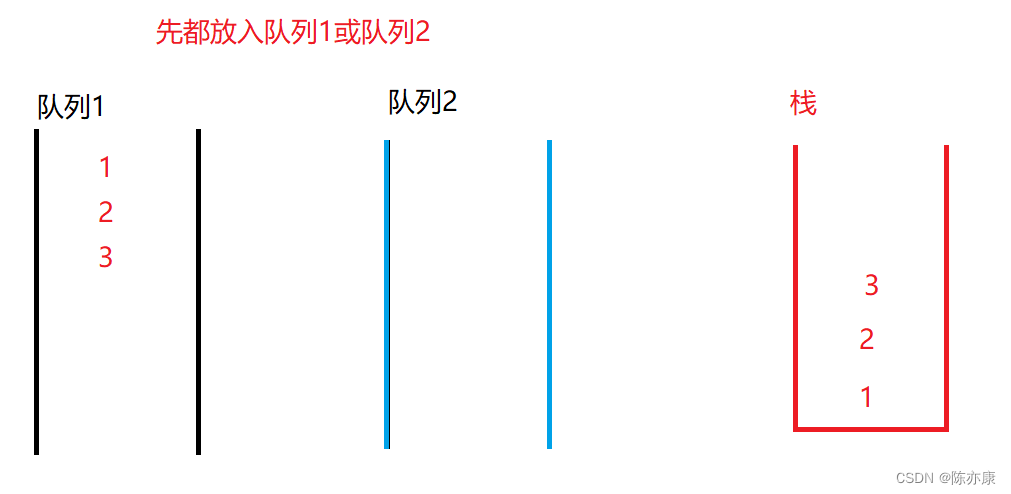
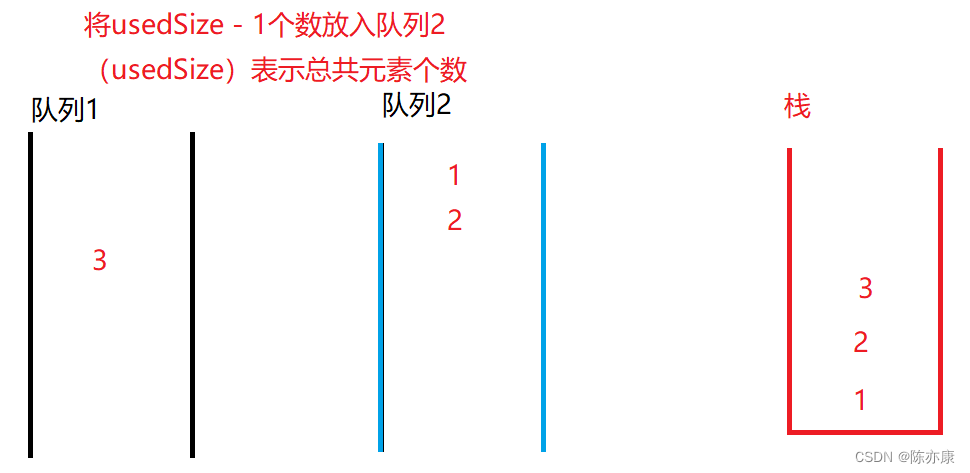
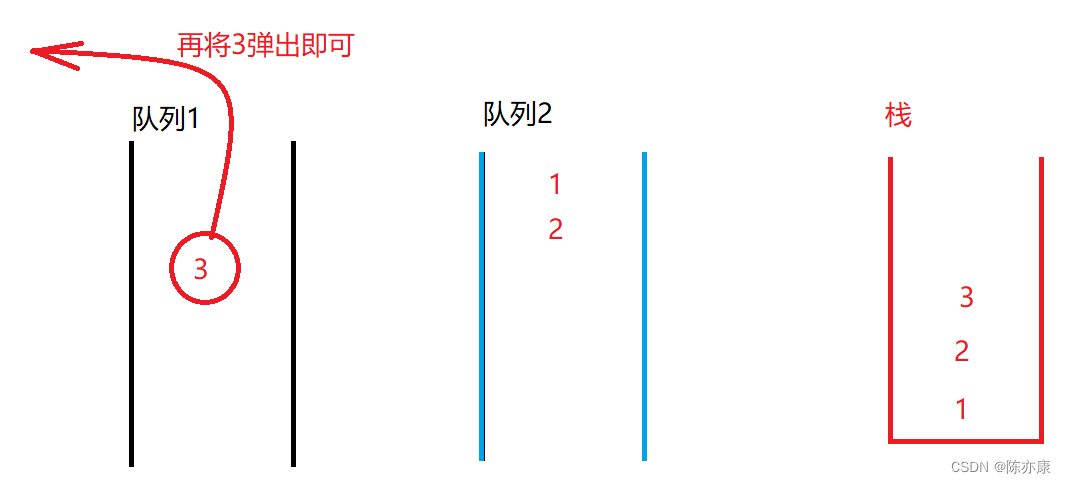
注意:
- 哪个队列不为空就放入哪个将元素放入哪个队列
- 若两个都为空,任选一个队列放入即可
如下代码:
class MyStack {
public Queue<Integer> q1;
public Queue<Integer> q2;
public int usedSize;
public MyStack() {
q1 = new LinkedList<>();
q2 = new LinkedList<>();
}
//压栈
public void push(int x) {
//哪个队列不为空,往那里里面放,都为空就放q1
if(!q1.isEmpty()){
q1.offer(x);
}
else if(!q2.isEmpty()){
q2.offer(x);
}
else{
q1.offer(x);
}
usedSize++;
}
//出栈
public int pop() {
//哪个队列不为空,就从哪里取元素放到另一个队列里
if(empty()){
return -1;
}
if(!q1.isEmpty()){
//转移usedSize - 1个元素到另一个队列
//for(int i = 0; i < usedSize - 1; i++)//不能这样写,usedSize会随着出栈不断减少
int size = usedSize;
for(int i = 0; i < size - 1; i++){
q2.offer(q1.poll());
}
usedSize--;
return q1.poll();
}
else{
int size = usedSize;
for(int i = 0; i < size - 1; i++){
q1.offer(q2.poll());
}
usedSize--;
return q2.poll();
}
}
public int top() {
//哪个队列不为空,就从哪里取元素放到另一个队列里
if(empty()){
return -1;
}
int tmp = 0;
if(!q1.isEmpty()){
int size = usedSize;
for(int i = 0; i < size - 1; i++){
q2.offer(q1.poll());
}
tmp = q1.peek();
q2.offer(q1.poll());
}
else{
int size = usedSize;
for(int i = 0; i < size - 1; i++){
q1.offer(q2.poll());
}
tmp = q2.peek();
q1.offer(q2.poll());
}
return tmp;
}
//判空
public boolean empty() {
return usedSize == 0;
}
}
最容易理解的办法
画个图就清楚啦~
class MyStack {
private Queue<Integer> queue1 = new LinkedList<>();
private Queue<Integer> queue2 = new LinkedList<>();
public MyStack() {
}
public void push(int x) {
while(!queue1.isEmpty()) {
queue2.offer(queue1.poll());
}
queue1.offer(x);
while(!queue2.isEmpty()) {
queue1.offer(queue2.poll());
}
}
public int pop() {
return queue1.poll();
}
public int top() {
return queue1.peek();
}
public boolean empty() {
return queue1.isEmpty();
}
}
单队列实现栈
实际上,单个队列也可以实现栈,每次入栈前都需要看一下栈里有多少个元素,然后先把需要入栈的元素入栈后,按顺序弹出之前记录的元素个数,就可以维持一个栈结构了.
class MyStack {
private Queue<Integer> queue;
public MyStack() {
this.queue = new LinkedList<>();
}
public void push(int x) {
queue.offer(x);
for(int i = 0; i < queue.size() - 1; i++) {
queue.offer(queue.poll());
}
}
public int pop() {
return queue.poll();
}
public int top() {
return queue.peek();
}
public boolean empty() {
return queue.isEmpty();
}
}
双栈实现队列
单个栈是无法实现队列的,双栈是可以的,如下分析(例如出队)
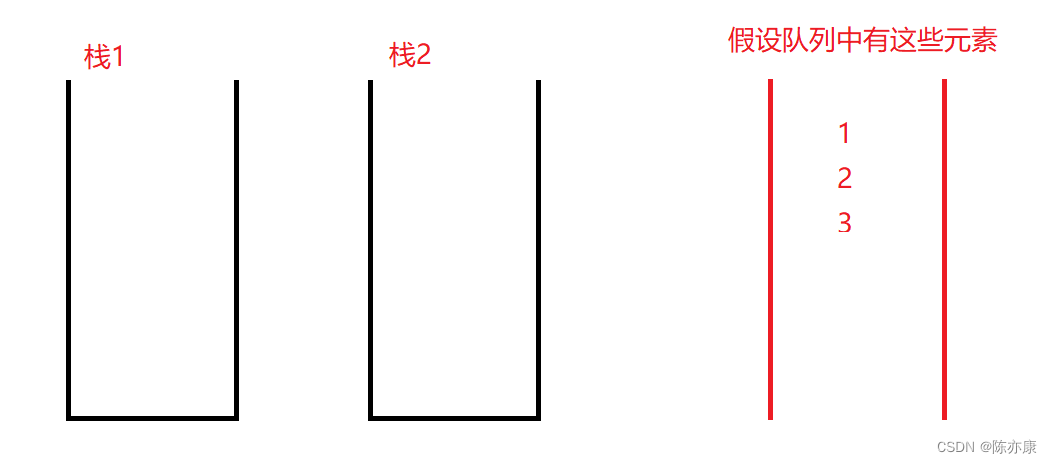
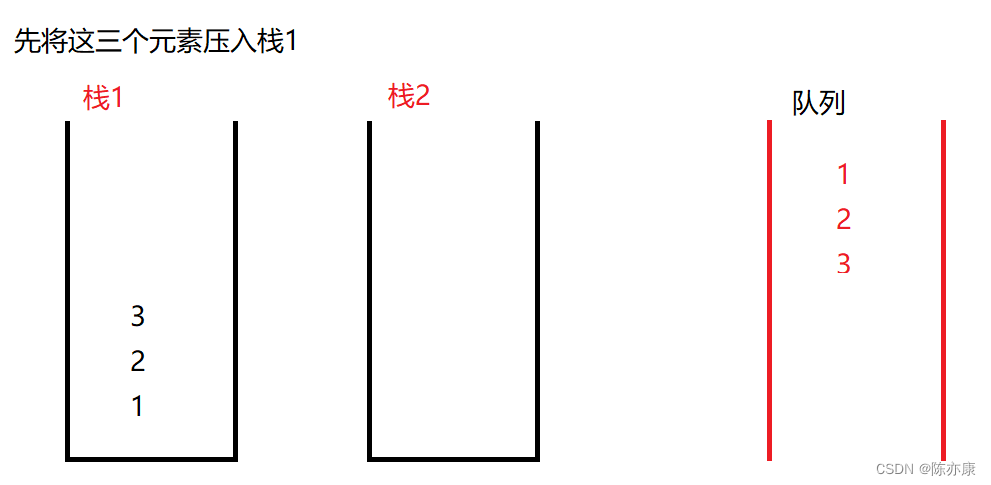
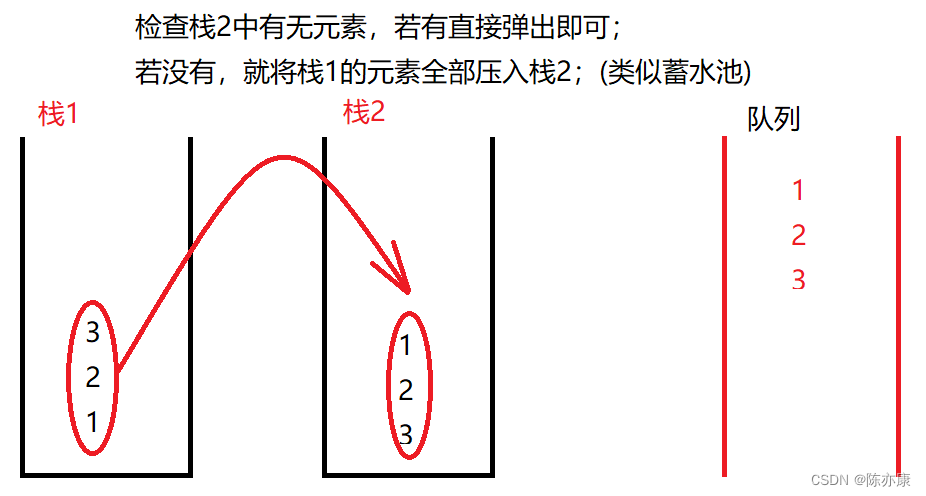
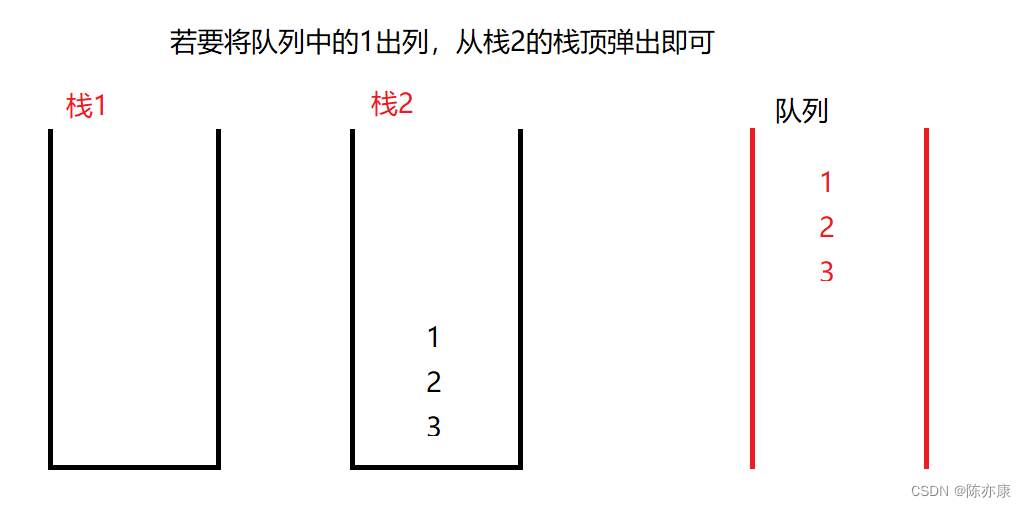
注意:
- 出队之前一定要先检查s2中是否有元素,若有直接弹出即可,若没有再将s1全部压入s2中
- 检查队列首元素也是如此(peek)
代码如下:
class MyQueue {
public Stack<Integer> s1;//入栈
public Stack<Integer> s2;//出栈
public MyQueue() {
this.s1 = new Stack<>();
this.s2 = new Stack<>();
}
//进队
public void push(int x) {
s1.push(x);
}
//出队
public int pop() {
if(empty()) {
return -1;
}
//s2如同蓄水池,一旦要出队列,就全压s1
//前提一定要是s2为空!若不为空,再压入s2,顺序就不一样!
if(s2.empty()){
while(!s1.empty()) {
s2.push(s1.pop());
}
return s2.pop();
}
//如果s2里有元素,就直接弹出
return s2.pop();
}
public int peek() {
if(empty()) {
return -1;
}
//s2如同蓄水池,一旦要出队列,就全压s1
//前提一定要是s2为空!若不为空,再压入s2,顺序就不一样!
if(s2.empty()){
while(!s1.empty()) {
s2.push(s1.pop());
}
return s2.peek();
}
//如果s2里有元素,就直接弹出
return s2.peek();
}
public boolean empty() {
return s1.empty() && s2.empty();
}
}
最容易理解的办法
画个图就知道了~
class MyQueue {
private Stack<Integer> stack1 = new Stack<>();
private Stack<Integer> stack2 = new Stack<>();
public MyQueue() {
}
public void push(int x) {
while(!stack1.isEmpty()) {
stack2.push(stack1.pop());
}
stack1.push(x);
while(!stack2.isEmpty()) {
stack1.push(stack2.pop());
}
}
public int pop() {
return stack1.pop();
}
public int peek() {
return stack1.peek();
}
public boolean empty() {
return stack1.isEmpty();
}
}
